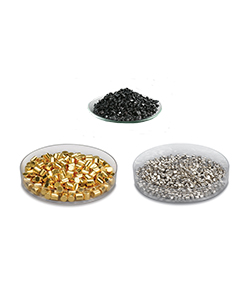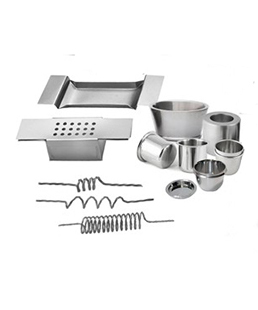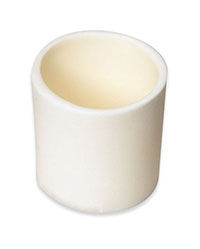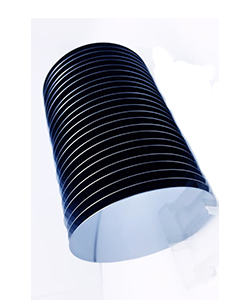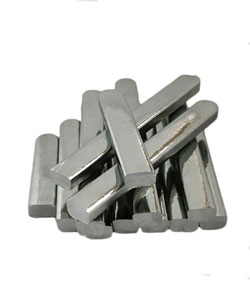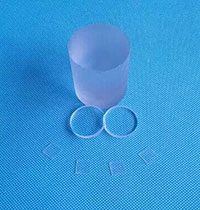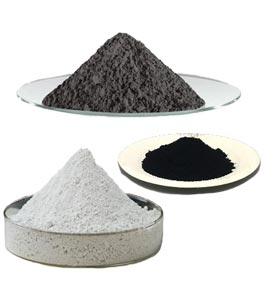 +86-731-89578196
+86-731-89578196
 [email protected]
[email protected]
- Home
- Our Company
-
Products
Sputtering Targets
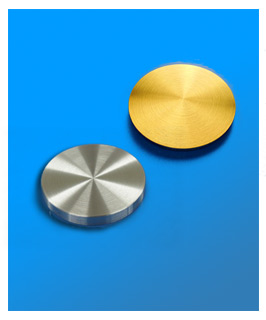
- Industries
- Blog
- FAQ
- Contact Us
Ceramic Refractory Materials: Properties, Types, and Applications in Thin-Film Coating
views, Updated: 2025-10-24
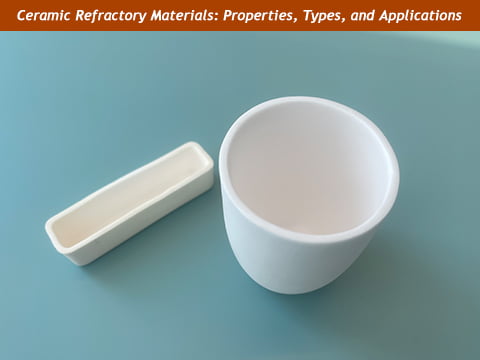
Introduction — What Are Ceramic Refractory Materials?
Ceramic refractory materials are special types of ceramics that can withstand very high temperatures without melting or breaking down. They are made from inorganic compounds such as oxides of aluminum, zirconium, titanium, and magnesium. Because of their heat resistance, chemical stability, and strength, they are widely used in high-temperature and vacuum environments.In thin-film coating industries, these ceramics are essential. They are used as sputtering targets, evaporation materials, and crucibles inside coating systems. When exposed to heat or plasma during deposition, ceramic refractory materials stay stable and do not react easily with other elements — this helps create pure, uniform, and durable films on substrates like glass or semiconductors.
Unlike metal materials that can be melted and cast, ceramics are usually made through a powder metallurgy process. Fine ceramic powders are pressed, sintered, and then machined into the required shapes. This process ensures high density, good uniformity, and precise size control, which are all important for stable film coating.
At AEM Deposition, we produce a wide range of ceramic and oxide sputtering targets, including Al₂O₃ (Aluminum Oxide), TiO₂ (Titanium Oxide), ZnO (Zinc Oxide), and SiO₂ (Silicon Dioxide). These materials are widely used in semiconductors, optical coatings, solar cells, and display technology. Our customers—mainly research labs, coating equipment manufacturers, and thin-film producers—choose these materials for their reliability and consistency.
In short, ceramic refractory materials combine heat resistance, strength, and purity, making them the foundation of many modern thin-film and coating applications.
Key Properties of Ceramic Refractory Materials
Ceramic refractory materials are known for their excellent stability and performance under harsh conditions. Below are the main properties that make them valuable in thin-film deposition and other high-temperature applications.1. High Melting Point & Thermal Stability
Ceramic refractory materials can withstand extremely high temperatures, often above 1500 °C, without softening or melting.Materials like Al₂O₃ (aluminum oxide) and ZrO₂ (zirconium oxide) keep their strength even when heated repeatedly. This makes them perfect for use inside PVD and CVD coating systems, where strong heat and plasma exposure are common.2. Excellent Chemical Resistance
Ceramics are chemically inert, meaning they do not easily react with gases, vapors, or molten metals. During thin-film coating, they remain stable even when exposed to oxygen, nitrogen, or reactive plasmas, preventing contamination of the coating film. This property ensures high purity and consistency—key requirements in semiconductor and optical applications.3. Electrical Insulation & Optical Clarity
Many ceramic refractory materials act as good electrical insulators and optically transparent media.For example:· Al₂O₃ and SiO₂ are used as insulating layers and protective films.
· ZnO and TiO₂ are used in optical coatings and transparent conductive films for displays and solar panels.Their ability to transmit or block light precisely makes them ideal for energy and optical device manufacturing.
4. Mechanical Strength & Thermal Shock Resistance
Ceramics are hard and wear-resistant, maintaining their shape under pressure or vibration.They also handle sudden temperature changes—called thermal shock—better than many metals.This is important for sputtering targets and crucibles that face rapid heating and cooling cycles during thin-film production.5. Dimensional and Structural Stability
Ceramic refractory materials do not deform or expand easily, ensuring tight tolerances and stable performance over time.This structural reliability is crucial for precision components like sputtering targets, crucibles, and insulating parts used in coating equipment.Together, these properties make ceramic refractory materials an essential foundation for advanced coating systems, electronic devices, and optical products.
Classification and Types of Common Ceramic Refractory Materials
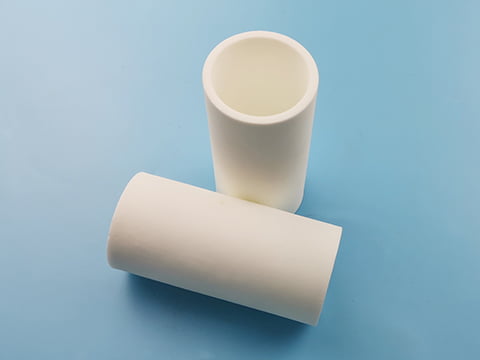
Ceramic refractory materials come in many types, each with different compositions and properties.The most common ones used in thin-film deposition, vacuum coating, and high-temperature environments are oxides such as aluminum oxide, zirconium oxide, titanium oxide, magnesium oxide, and silicon dioxide.
Below is a simple overview of these materials and their main features:
| Material Name | Chemical Formula | Main Features | Typical Applications |
| Aluminum Oxide | Al₂O₃ | High hardness, excellent insulation, and strong corrosion resistance | Sputtering targets, insulating layers, crucibles |
| Zirconium Oxide | ZrO₂ | Very high melting point and good toughness; resists thermal shock | Thermal barrier coatings, aerospace coatings |
| Titanium Oxide | TiO₂ | High refractive index, strong photocatalytic activity | Optical coatings, solar cell layers |
| Magnesium Oxide | MgO | Excellent thermal resistance and stability in vacuum | Evaporation boats, furnace linings |
| Silicon Dioxide | SiO₂ | High transparency and chemical purity; good dielectric strength | Optical films, semiconductor insulating layers |
Each material has its own unique performance advantages, allowing engineers to choose the most suitable type for their process:
· Al₂O₃ is ideal for insulation and wear-resistant coatings.
· ZrO₂ offers toughness and temperature endurance for extreme environments.
· TiO₂ and ZnO are often used for optical and photocatalytic films.
· SiO₂ is valued for transparency and chemical stability in electronics and optics.
At AEM Deposition, we produce these oxide-based ceramic materials in high-purity sputtering target form, using powder metallurgy and hot isostatic pressing (HIP) to achieve superior density and surface uniformity. This ensures stable sputtering performance and long target lifetime in both R&D and mass-production coating systems.
Applications of Ceramic Refractory Materials
Ceramic refractory materials are used in many high-temperature, high-vacuum, and precision coating environments. Their unique combination of heat resistance, chemical stability, and electrical insulation makes them essential in modern thin-film and material science applications.Below are the main fields where these materials play an important role.
1. Thin-Film Deposition and Sputtering Targets
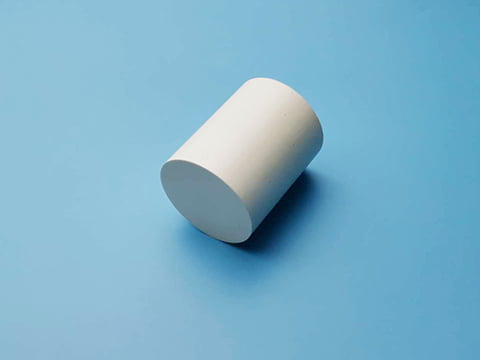
This is one of the most common and important uses of ceramic refractory materials.Ceramic targets such as Al₂O₃, TiO₂, ZnO, and SiO₂ are used in magnetron sputtering systems to deposit thin layers of insulating, dielectric, or optical films.
These coatings are widely applied in:
· Semiconductors and microelectronics – insulating and dielectric layers.
· Display and touch panels – transparent conductive films like AZO and ITO.
· Optical lenses and filters – anti-reflection and hard coatings.
Because of their high purity and thermal stability, AEM Deposition's ceramic targets ensure uniform film growth, low defect rates, and long target lifetime.
At AEM Deposition, we supply a wide range of ceramic sputtering targets, such as:
· Al₂O₃ sputtering targets (Aluminum Oxide) – used for high-temperature insulating films.
· TiO₂ sputtering targets (Titanium Dioxide) – ideal for optical and photocatalytic coatings.
· SiO₂ sputtering targets (Silicon Dioxide) – applied in dielectric, optical, and barrier coatings.
· NiO and HfO₂ sputtering targets – used for electrochromic and semiconductor applications.
These materials deliver high film uniformity, strong adhesion, and long target life, making them suitable for semiconductors, optical filters, solar cells, and display technologies.
2. Thermal and Structural Components
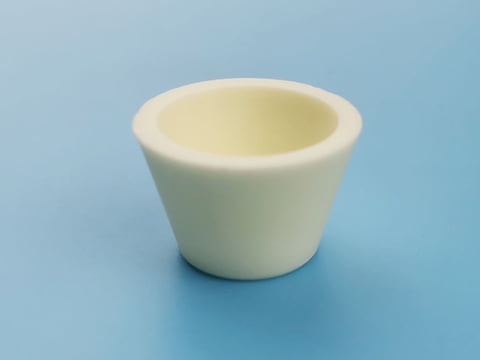
Ceramic refractory materials are also used to make crucibles, evaporation boats, diffusion barriers, and chamber liners inside coating and furnace systems.These parts are exposed to high heat and plasma for long hours, so thermal shock resistance and dimensional stability are key.
Examples include:
· Al₂O₃ crucibles and MgO evaporation boats used for melting and evaporating high-melting-point materials.
· ZrO₂ liners and TiO₂-coated shields that protect vacuum chambers from plasma erosion.
· SiO₂ crucibles used in Czochralski crystal growth and semiconductor wafer production.
These components must remain stable even under continuous exposure to 1500–2000 °C, ensuring clean, contamination-free operation inside coating chambers.
3. Energy, Optical, and Electronic Devices
In advanced industries, ceramic refractory materials contribute to energy conversion, storage, and optical performance:· TiO₂ is used in solar cells and photocatalytic coatings for clean-energy applications.
· ZnO and SiO₂ thin films appear in LEDs, sensors, and optical windows.
· Al₂O₃ layers act as protective coatings for battery separators and circuit components.
Their ability to perform reliably in harsh thermal and chemical environments makes them essential in both research and large-scale manufacturing.
Through years of experience in powder metallurgy and thin-film material production, AEM Deposition supplies these ceramic materials in target, pellet, crucible, and custom-machined forms to customers in the semiconductor, optical coating, and energy technology industries.
Conclusion
Ceramic refractory materials play a key role in modern thin-film and high-temperature industries. Because they can withstand extreme heat, resist corrosion, and stay stable, they are widely used in semiconductors, solar panels, optical coatings, and energy devices.Products such as Al₂O₃ sputtering targets, TiO₂ evaporation materials, and SiO₂ crucibles are examples of how these materials help create clean, durable, and high-quality coatings. They keep their shape under heat and don’t react with other elements, which is why engineers and researchers rely on them for consistent results.
At AEM Deposition, we focus on producing high-purity ceramic refractory materials using advanced processes like powder metallurgy, vacuum sintering, and hot isostatic pressing (HIP).Every product is carefully tested by XRF, ICP-OES, SEM, and ultrasonic inspection to make sure it meets strict standards for density, purity, and smoothness.
Whether you need ceramic sputtering targets, oxide evaporation materials, or custom ceramic components, AEM Deposition provides trusted quality, technical support, and global delivery to meet the demands of both research and industrial customers.
Contact us today to learn more about our ceramic refractory materials and how we can support your next coating project.
LATEST NEWS





